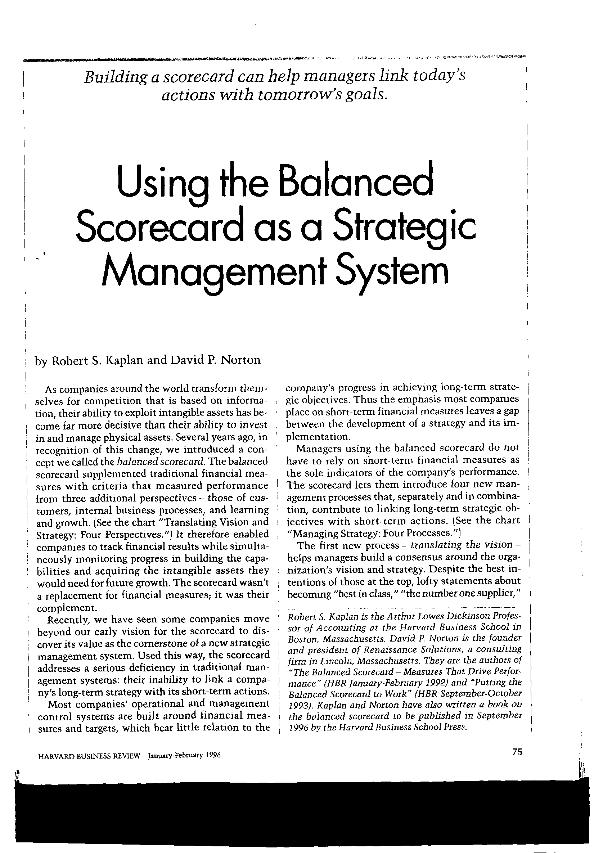Using the balanced scorecard as a strategic management system

Contenido multimedia no disponible por derechos de autor o por acceso restringido. Contacte con la institución para más información.
| Tag | 1 | 2 | Valor |
|---|---|---|---|
| LDR | 00000nab a2200000 i 4500 | ||
| 001 | MAP20071024253 | ||
| 003 | MAP | ||
| 005 | 20080418121040.0 | ||
| 007 | hzruuu---uuuu | ||
| 008 | 960226e19960101gbr|||| | |00010|eng d | ||
| 040 | $aMAP$bspa | ||
| 084 | $a922.111 | ||
| 100 | 1 | $0MAPA20080196912$aKaplan, Robert S. | |
| 245 | 1 | 0 | $aUsing the balanced scorecard as a strategic management system$cby Robert S. Kaplan and David P. Norton |
| 520 | $aAs companies around the world transform themselves for competitition that is based on information, their ability to exploit intangible assets has became far more decisive than their ability to invest in and manage physical assets. Several years ago, in recognition of this change, the authors introduced a concept they called the "balanced scorecard". The balanced scorecard supplemented traditional financial measures with criteria that measured performance from three additional perspectives - those of customers, internal business processes, and learning and growth. It therefore enabled companies to track financial results while simultaneously monitoring progress in building the capabilities and acquiring the intangible assets they would need for future growth. The scorecard wasn't a replacement for financial measures; it was their complement | ||
| 650 | 1 | 1 | $0MAPA20080607067$aManagement estratégico |
| 650 | 1 | 1 | $0MAPA20080606091$aEstrategia empresarial |
| 650 | 1 | 1 | $0MAPA20080617868$aPlanificación estratégica |
| 650 | 1 | 1 | $0MAPA20080546991$aEmpresas |
| 650 | 1 | 1 | $0MAPA20080613693$aCuadro de Mando Integral |
| 700 | 1 | $0MAPA20080172879$aNorton, David P. | |
| 740 | 0 | $aHarvard business review | |
| 773 | 0 | $wMAP20077100345$tHarvard business review$dBoston$gnº 1, January-February 1996 ; p. 75-85 |

